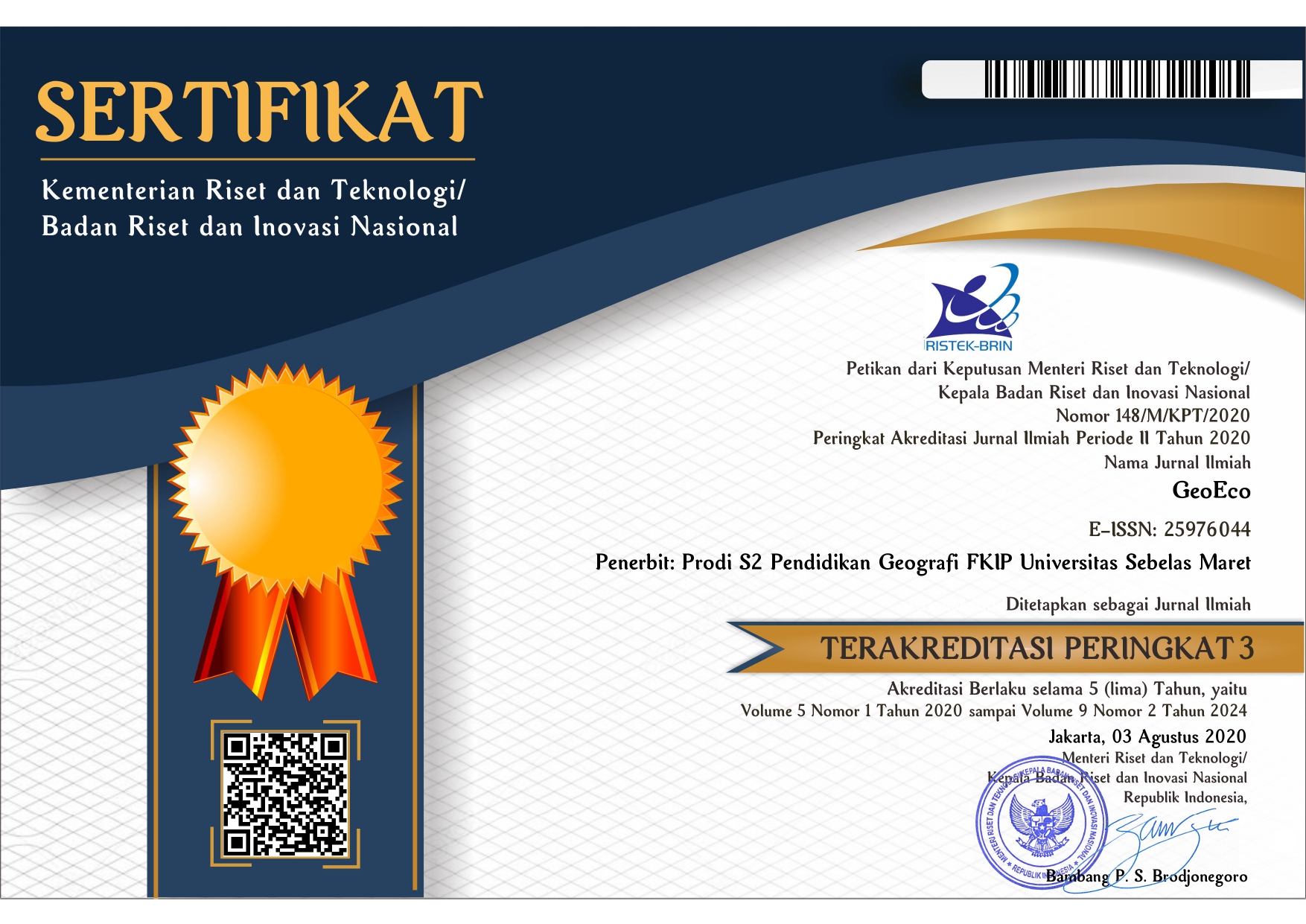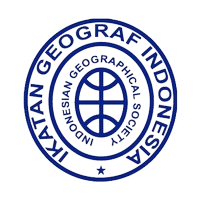ENVIRONMENTAL CARE ATTITUDE OF THE STUDENTS IN SENIOR HIGH SCHOOL AT PATI REGENCY
Abstract
Keywords
Full Text:
PDFReferences
Ahmad, M. (2010). Pendidikan Lingkungan Hidup dan Masa Depan Ekologi Manusia. Jurnal Forum Tarbiyah, 8, 57–71. Akib, M. (2014). Hukum Lingkungan Perspektif Global dan Nasional. PT. Raja Grafindo Persada. Badan Pusat Statistik. (2012). Indikator Perilaku Peduli Lingkungan Hidup. Handayani, N., & Indartono, S. (2016). The Implementation Of Multicultural Character Education. International Conference on Ethics of Business, Economics, and Social Science, 508–518. Husein, U. (2011). Metode Penelitian Untuk Skripsi dan Tesis Bisnis (11th ed.). PT Raja Grafindo Persada. Idris, F., Hassan, Z., Ya’acob, A., Gill, S. K., & Awal, N. A. M. (2012). The Role of Education in Shaping Youth’s National Identity. Procedia - Social and Behavioral Sciences, 59, 443–450. https://doi.org/https://doi.org/10.1016/j.sbspro.2012.09.299 Kementerian Lingkungan Hidup. (2013). Perilaku Masyarakat Peduli Lingkungan (Survei KLH 2012). Keselman, A., Levin, D. M., Kramer, J. F., Matzkin, K., & Dutcher, G. (2011). Educating Young People about Environmental Health for Informed Social Action. Umwelt Und Gesundheit Online, 4(December 2010), 1–8. http://www.ncbi.nlm.nih.gov/pubmed/24383062%0Ahttp://www.pubmedcentral.nih.gov/articlerender.fcgi?artid=PMC3875179 Kresnawati, N. (2013). Korelasi Kualitas Pembelajaran Geografi dan Hasil Belajar Terhadap Sikap Pedui Lingkungan Siswa Kelas XII IPS SMA N 1 Ponorogo. Jurnal Pendidikan Humaniora, 10(3), 290–303. Lee, J. T., Glantz, S. A., & Millett, C. (2011). Effect of smoke-free legislation on adult smoking behaviour in England in the 18 months following implementation. PloS One, 6(6), e20933. https://doi.org/10.1371/journal.pone.0020933 Mushlich, M. (2011). Pendidikan Karakter menjawab Tantangan Krisis Multidimensional. Bumi Aksara. Mustakin, B. (2011). Pendidikan Karakter: Membangun Delapan Karakter Emas Menuju Indonesia Bermartabat. Samudra Biru. Narwanti, S. (2011). Pendidikan Karakter Pengintegrasian 18 Nilai Peembentuk Karakter dalam Mata Pelajaran. Familia. Ors, F. (2012). Environmental education and the role of media in environmental education in Turkey. Procedia - Social and Behavioral Sciences, 46, 1339–1342. https://doi.org/doi: 10.1016/j.sbspro.2012.05.298 Özden, M. (2008). Environmental Awareness and Attitudes of Student Teachers: An Empirical Research. International Research in Geographical and Environmental Education, 17(1), 40–55. https://doi.org/10.2167/irgee227.0 Pala, A. (2011). The Need For Character Education Turkey. International Journal Of Social Sciences And Humanity Studies, 3, 23–32. Palmer, C., McShane, K., & Sandler, R. (2014). Environmental ethics. Annual Review of Environment and Resources, 39, 419–442. https://doi.org/10.1146/annurev-environ-121112-094434 R, L. S., & J., Q. D. (2012). Where would Darwin have been without taxonomy? Journal of Biological Education, 43, 51–52. Rafiei, N., & Davari, F. (2015). The Role of Human Resources Management on Enhancing the Teaching Skills of Faculty Members. Materia Socio-Medica, 27(1), 35–38. https://doi.org/10.5455/msm.2014.27.35-38 Rina Mailisa, E., Yulianto, B., & Warsito, B. (2020). Water quality condition of Sani river as source of drinking water of PDAM Tirta Bening in Pati Regency. E3S Web Conf., 202, 06040. https://doi.org/10.1051/e3sconf/202020206040 Saptono. (2011). Dimensi-dimensi Pendidikan Karakter. Erlangga. Sudijono, A. (2012). Pengantar Evaluasi Pendidikan. PT Raja Grafindo Persada. Sugiyono. (2013). Metode Penelitian Pendidikan (Pendekatan Kuantitatif, Kualitatif, dan R & D). Alfabeta. Suprayogo, I. (2013). Pengembangan Pendidikan Karakter. UIN-MALIKI PRESS. Takdir, M. (2014). Pendidikan yang Mencerahkan. UMM Press. Wiryono. (2013). Pengantar Ilmu Lingkungan. Pertelon Media. Yazar Soyadı, B. B. (2015). Creative and Critical Thinking Skills in Problem-based Learning Environments. Journal of Gifted Education and Creativity, 2(2), 71–71. https://doi.org/10.18200/jgedc.2015214253
Refbacks
- There are currently no refbacks.












.png)

